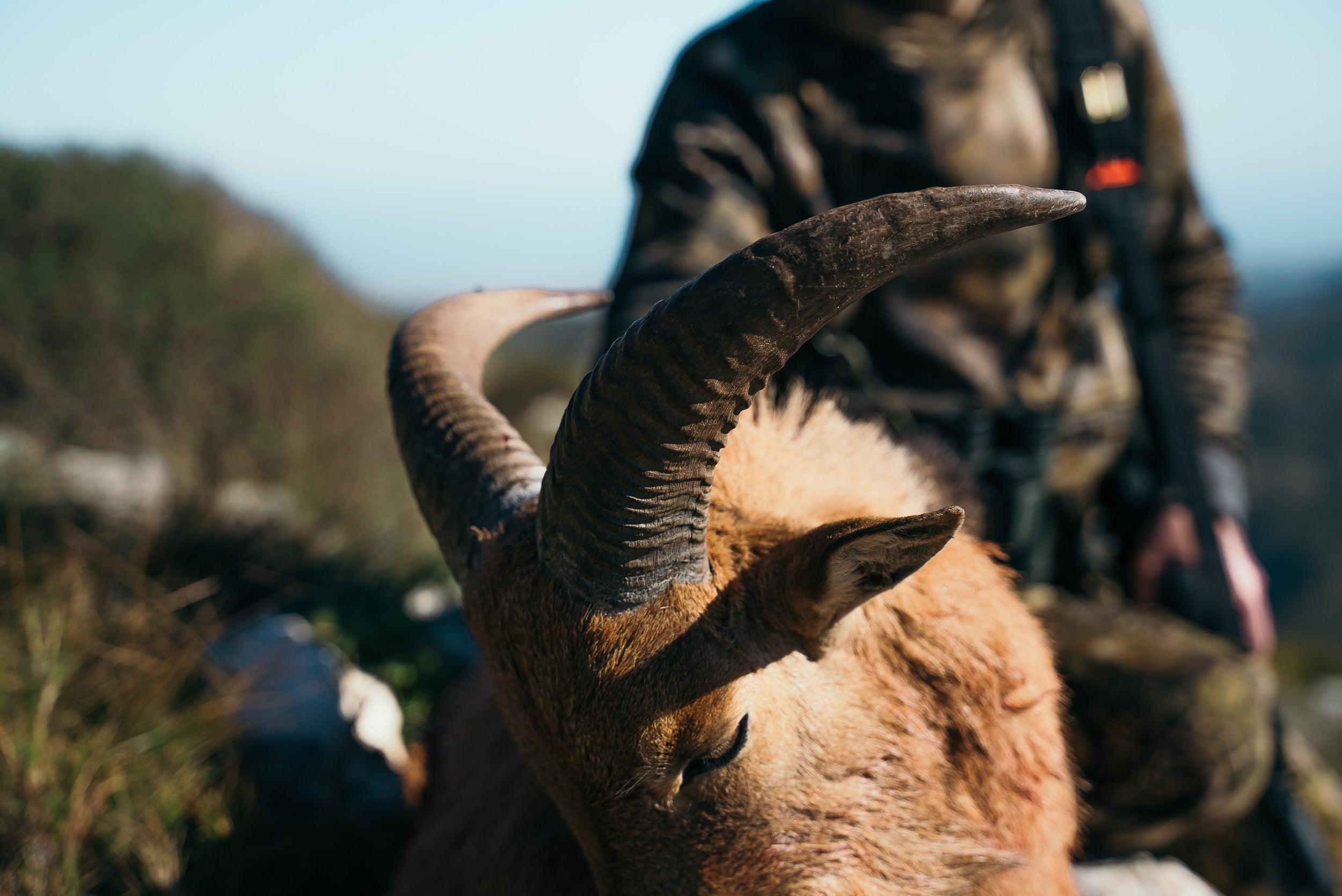Arruí, an introduced species

Invasive species are animals introduced naturally, accidentally or intentionally into an environment that is not their own and that, after a certain time, manage to adapt to it and colonize it. These species are the second cause of biodiversity loss in the world, according to the United Nations Development Program (UNDP). You can learn more about invasive species in Spain by CLICKING HERE .
The arruí has been classified as an invasive exotic species, although, to date, there are no scientific studies that have verified damage to the native flora and fauna. That is why we will talk about the Barbary ram as an introduced species.

The mouflon of the Atlas
This species is a bovid closely related to goats, whose natural habitat is the mountainous areas of North Africa, the Sahara or the Maghreb. Its appearance is similar to that of the mouflon and both males and females have horns, which grow throughout their lives. Although its most representative feature is the huge tuft of hair that hangs from its neck and front legs.
This species does well in arid and semi-desert areas. The color is reddish or light brown, similar to that of the sand in the deserts where it lives, slightly lighter on the lower part of the body and in old males the mane and beards are black.

Introduction in Spain
The arruí was introduced in Spain in order to be used for hunting, specifically, 9 males and 18 females were introduced in the Natural Park of Sierra Espuña (Murcia). Not having natural predators, they spread in a few years to neighboring areas such as Sierra del Gigante or Cambrón. It was also introduced to the island of Palma, this endangered the native island flora, to such an extent that the island council took action on the matter and authorized the elimination of part of the population. However, the steepness of the terrain made this task very difficult.
Not only has it been introduced to the Iberian Peninsula as a big game species in Texas, New Mexico and California, we can find large hunting grounds with large trophies.
Is it an exotic species?
At first, we can say that the exotic condition is met, but it is worth knowing that fossils have been discovered in France and Spain in the last few years. Therefore, the arruí, already inhabited the Mediterranean arc thousands of years ago.
Consequently, it has been proposed to declassify the exotic populations of arruis located in continental Spain based on the lack of empirical data that demonstrate deleterious effects on fauna and flora, beyond those caused by other native herbivorous ungulates. Other studies indicate a certain dietary preference for natural pastures. This has led several authors to raise the possibility that the arrui, as a species that prefers grazing, plays a particular role in the habitats of the southeast of the peninsula, theoretically facilitating a greater landscape heterogeneity and the consequent increase in associated biodiversity. In any case, the need to continue with the investigations and learn more about the situation is noted.

European arruí stalking in Spain
The arruí stalking is exciting whether we go for males or females. Females are more accessible at a lower price, cheap stalking that will start us in this modality. The trophies are very beautiful, because unlike other big game species, they have a considerable length of horn.
This animal can be hunted almost all year round. So we can be stalking when other species are closed. The best time to hunt large animals is in summer. However, due to the good nutrition in some areas, the females come into heat several times a year, and it is easy to get good trophies during the winter.
Its hunting attracts thousands of hunters a year and generates great benefits for rural areas where it is found. Since its meat has great culinary value, it is highly appreciated in the areas of eastern Spain.

Author: María Balletbó